Abstract
The impact of mortality due to congenital anomalies in single-delivery births was compared in 1960 and 1980 birth cohorts; data were used from the 1960 National Center for Health Statistics national linkage of birth and death certificates and the 1980 National Infant Mortality Surveillance project. In 1960 there were 14,714 deaths due to congenital anomalies, compared with 8,674 in 1980, a 41 percent reduction. The infant mortality risk (IMR) due to congenital anomalies fell 31 percent. This is in contrast with the observed 54 percent decline in IMR due to all causes. This reduction in mortality due to congenital anomalies occurred for both whites and blacks in the postneonatal period and for whites only in the neonatal period. Changes ranged from a 1.8 percent increase for the black neonatal mortality risk to a 46.6 percent decrease for the white postneonatal mortality risk. In spite of these relative reductions, the absolute percentage of all infant deaths due to congenital anomalies had increased from 15.8 percent in 1960 to 24.1 percent in 1980. Two categories, cardiovascular and central nervous system anomalies, accounted for 72 percent of infant deaths due to congenital anomalies in 1960 and for 59 percent in 1980; cardiovascular anomalies accounted for 48 percent of all deaths due to congenital anomalies in 1960 and 40 percent in 1980. Infant mortality risks in the United States showed a 2:1 black to white ratio in both 1960 and 1980. However, for infant mortality due to congenital anomalies, the black and white mortality risks were approximately equal in both 1960 and 1980. For infants with birth weights of 500-2,499 g, the risk of neonatal mortality for blacks was less than half the risk for whites.
Full text
PDF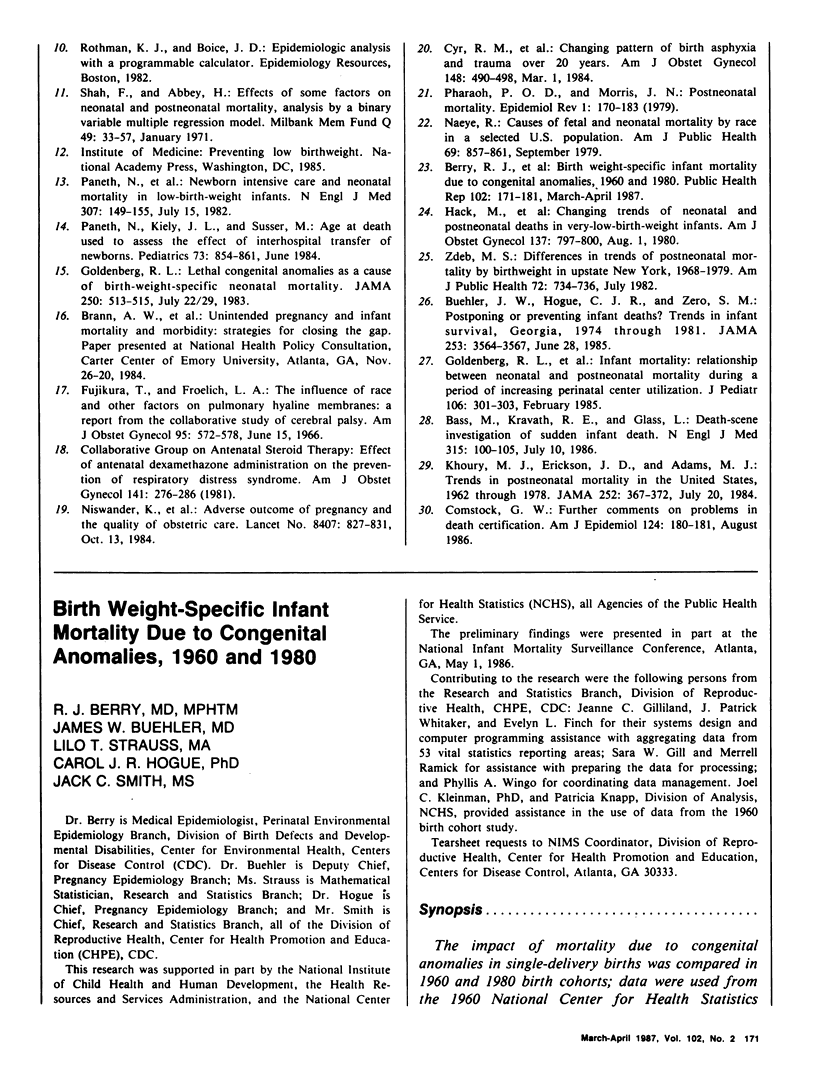
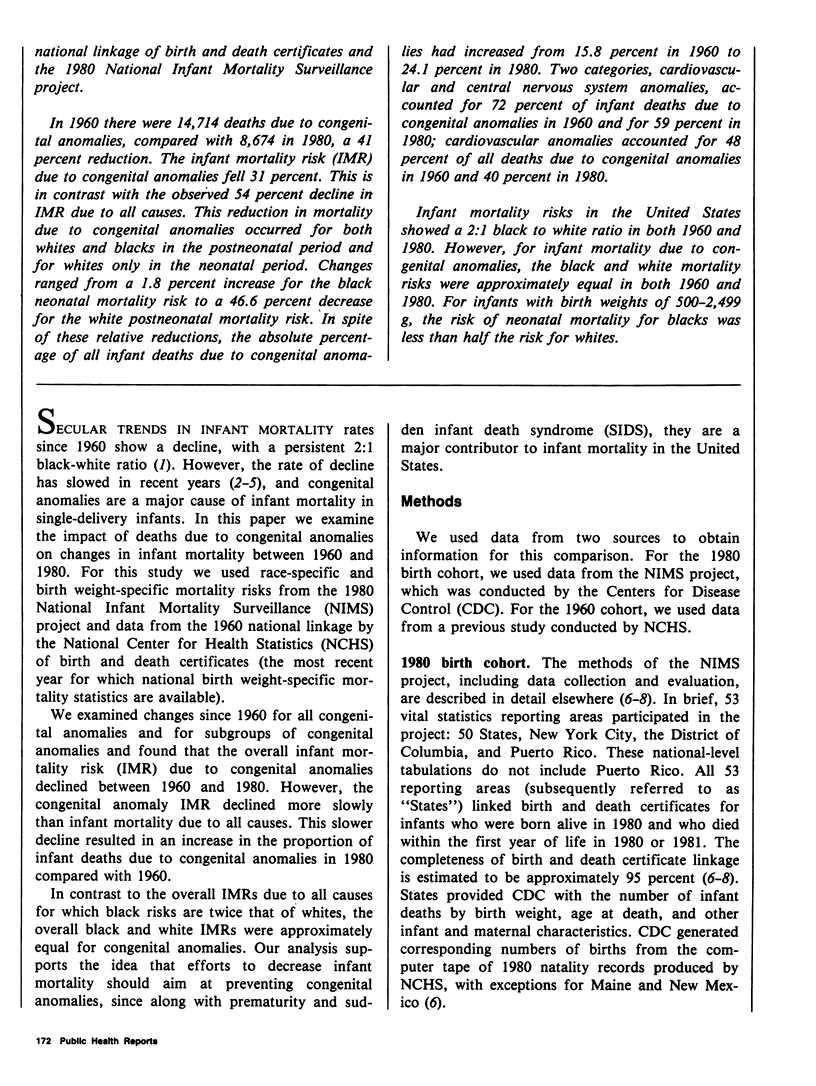
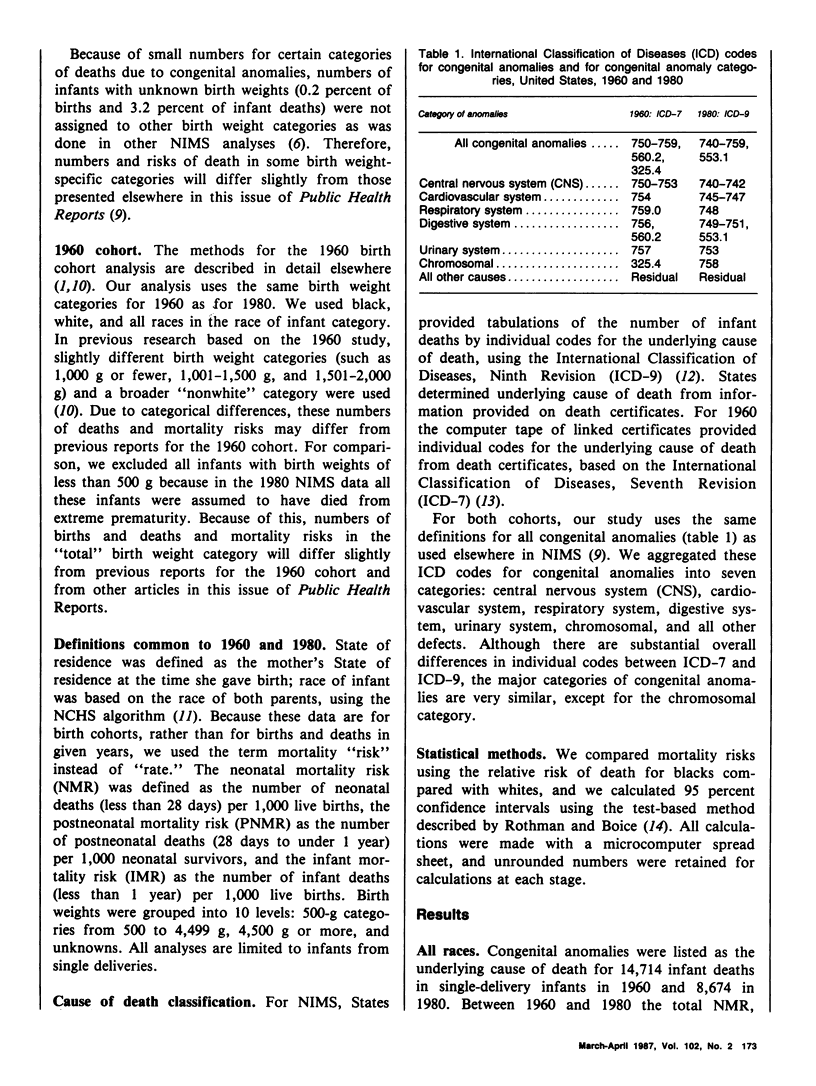
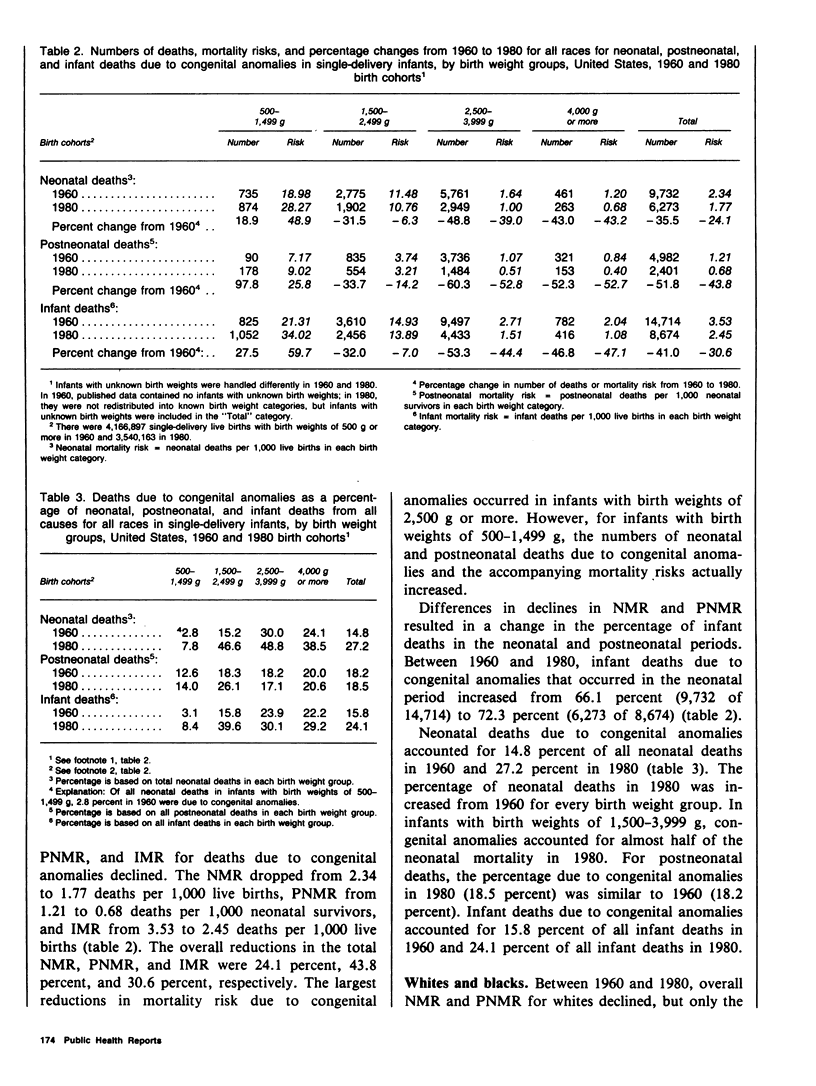
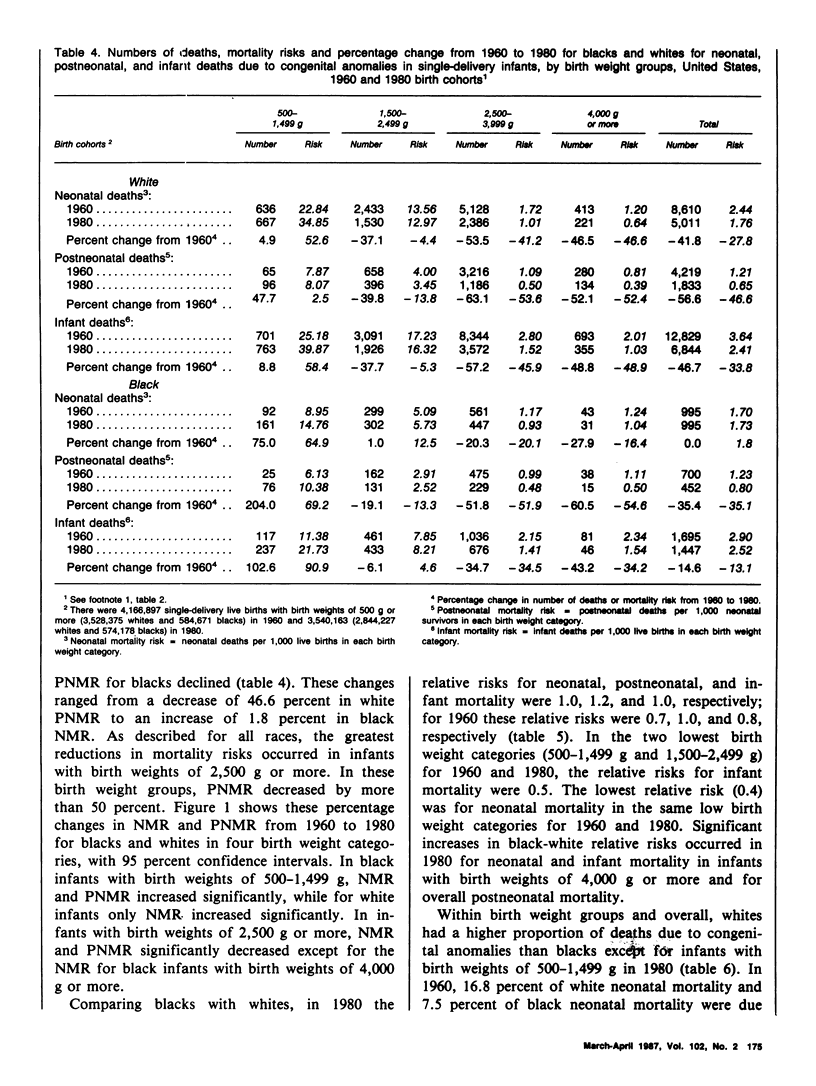
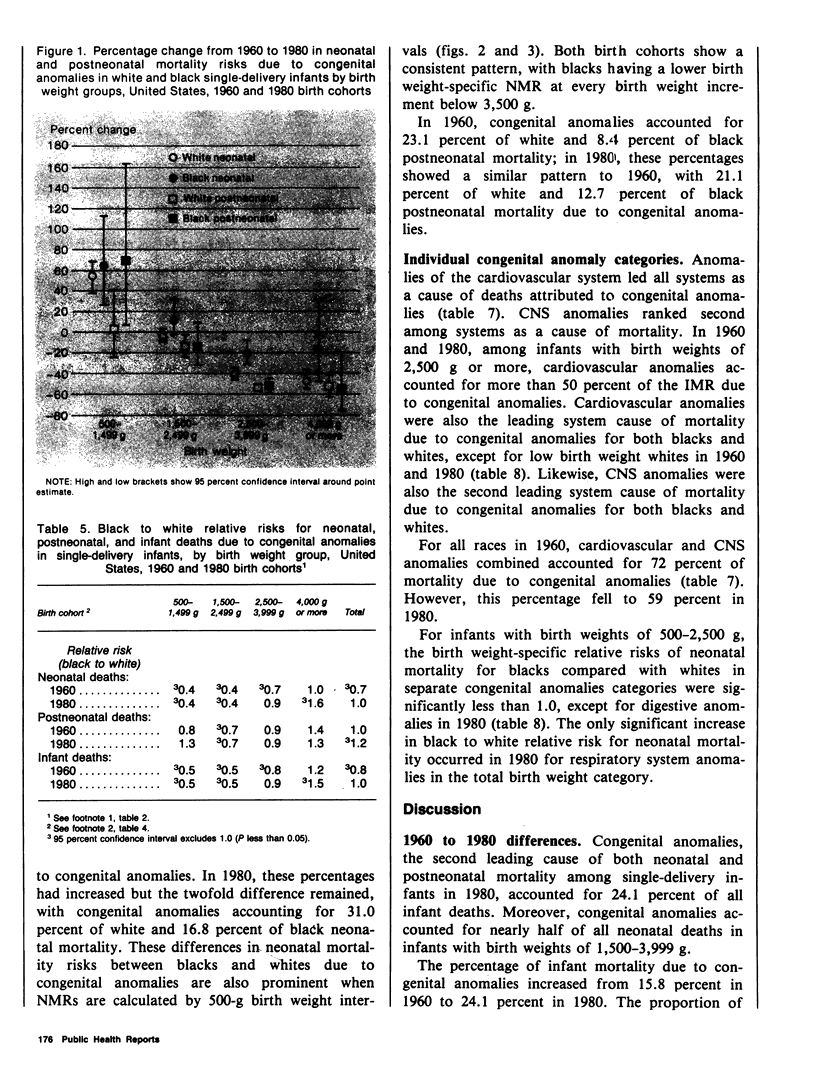
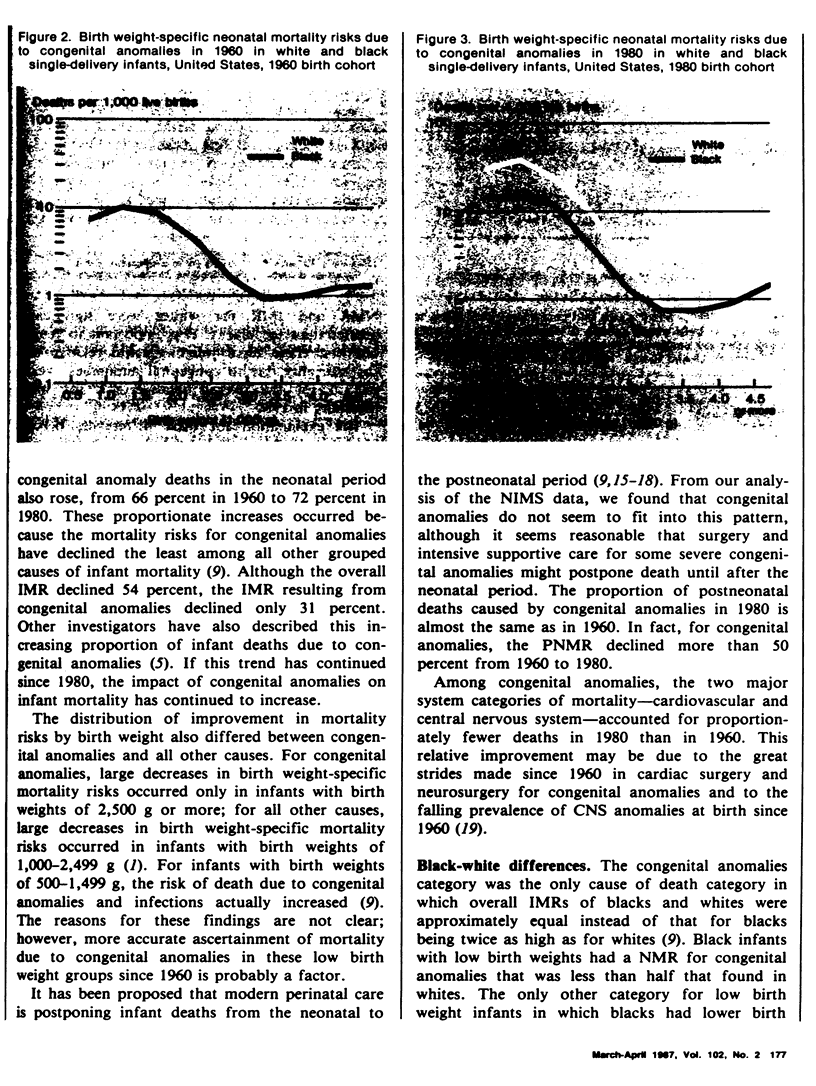
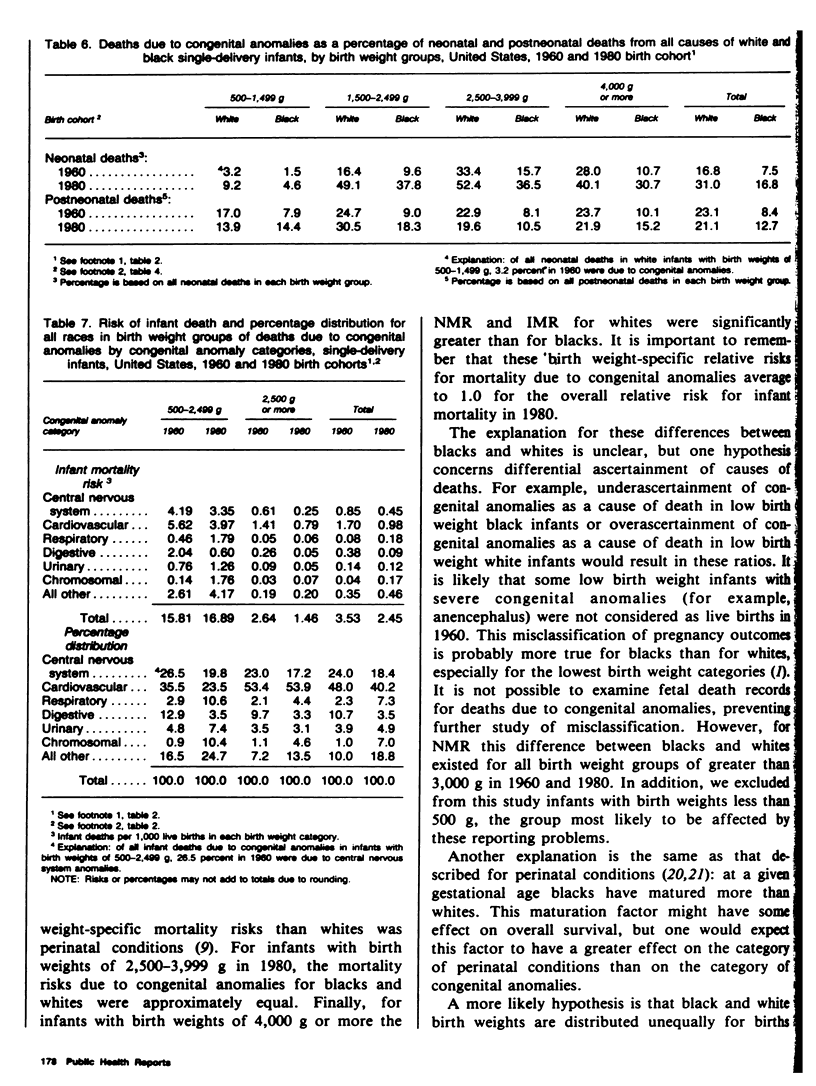
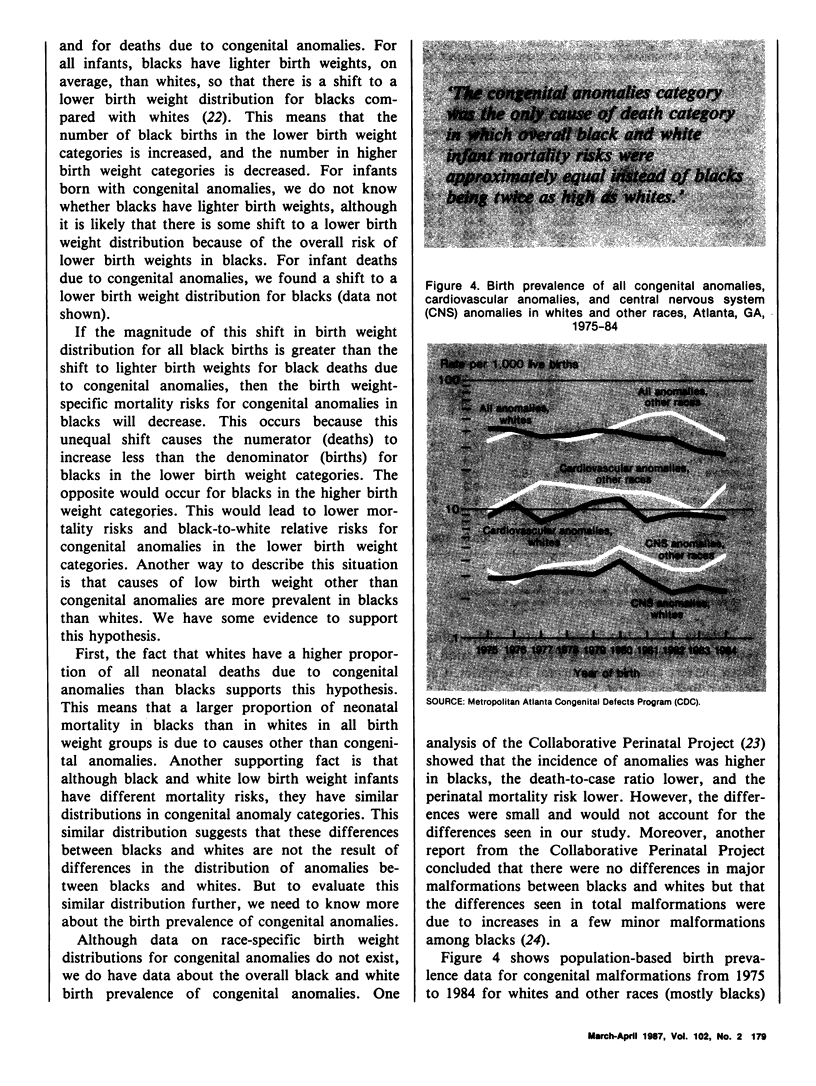
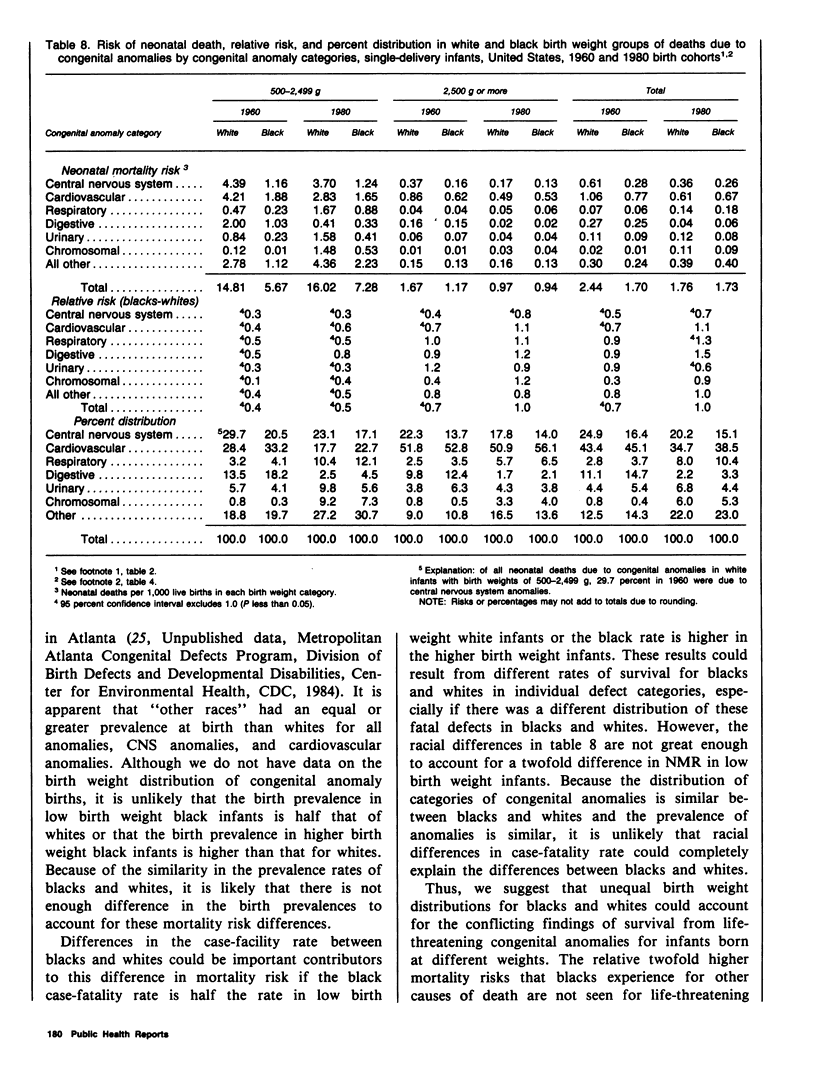
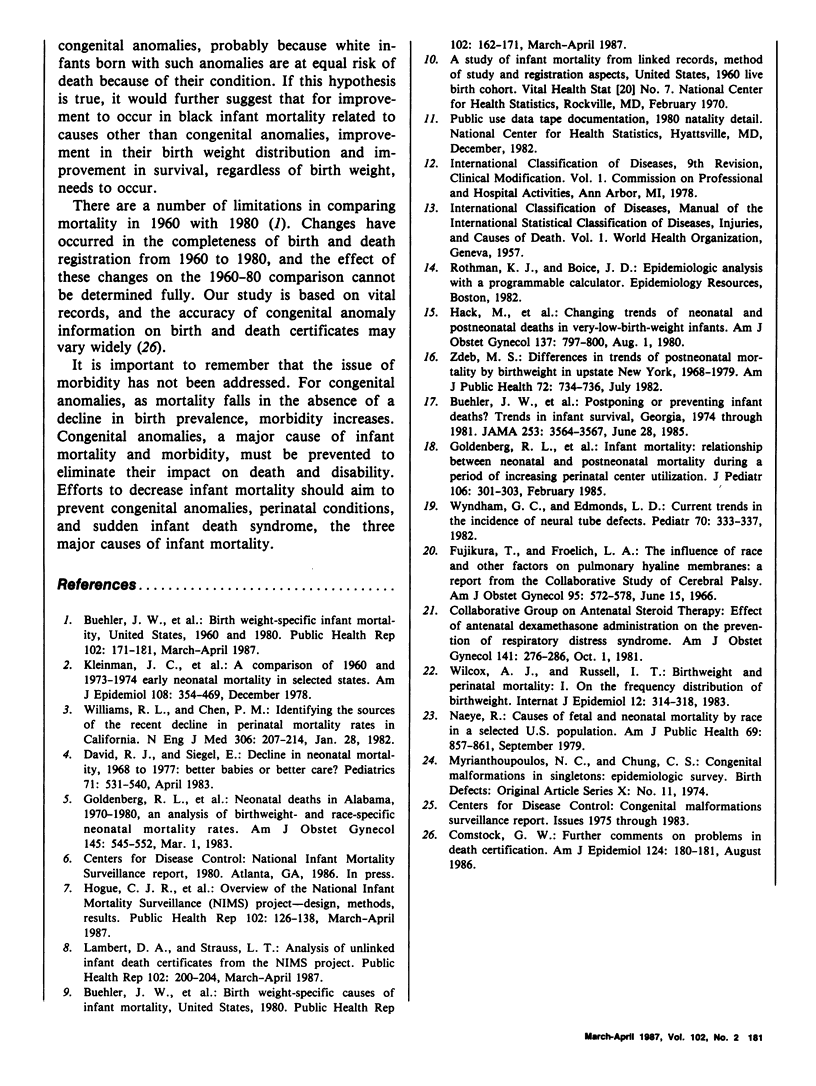
Selected References
These references are in PubMed. This may not be the complete list of references from this article.
- Buehler J. W., Hogue C. J., Zaro S. M. Postponing or preventing deaths? Trends in infant survival, Georgia, 1974 through 1981. JAMA. 1985 Jun 28;253(24):3564–3567. doi: 10.1001/jama.253.24.3564. [DOI] [PubMed] [Google Scholar]
- Buehler J. W., Strauss L. T., Hogue C. J., Smith J. C. Birth weight-specific causes of infant mortality, United States, 1980. Public Health Rep. 1987 Mar-Apr;102(2):162–171. [PMC free article] [PubMed] [Google Scholar]
- Buehler J. W., Strauss L. T., Hogue C. J., Smith J. C. Birth weight-specific causes of infant mortality, United States, 1980. Public Health Rep. 1987 Mar-Apr;102(2):162–171. [PMC free article] [PubMed] [Google Scholar]
- Comstock G. W., Markush R. E. Further comments on problems in death certification. Am J Epidemiol. 1986 Aug;124(2):180–181. doi: 10.1093/oxfordjournals.aje.a114376. [DOI] [PubMed] [Google Scholar]
- David R. J., Siegel E. Decline in neonatal mortality, 1968 to 1977: better babies or better care? Pediatrics. 1983 Apr;71(4):531–540. [PubMed] [Google Scholar]
- Fujikura T., Froehlich L. A. The influence of race and other factors on pulmonary hyaline membranes. A report from the Collaborative Study of Cerebral Palsy. Am J Obstet Gynecol. 1966 Jun 15;95(4):572–578. doi: 10.1016/0002-9378(66)90153-0. [DOI] [PubMed] [Google Scholar]
- Goldenberg R. L., Humphrey J. L., Hale C. B., Boyd B. W., Wayne J. B. Neonatal deaths in Alabama, 1970-1980: an analysis of birth weight- and race-specific neonatal mortality rates. Am J Obstet Gynecol. 1983 Mar 1;145(5):545–552. doi: 10.1016/0002-9378(83)91193-6. [DOI] [PubMed] [Google Scholar]
- Goldenberg R. L., Koski J., Ferguson C., Wayne J., Hale C. B., Nelson K. G. Infant mortality: relationship between neonatal and postneonatal mortality during a period of increasing perinatal center utilization. J Pediatr. 1985 Feb;106(2):301–303. doi: 10.1016/s0022-3476(85)80311-5. [DOI] [PubMed] [Google Scholar]
- Hack M., Merkatz I. R., Jones P. K., Fanaroff A. A. Changing trends of neonatal and postneonatal deaths in very-low-birth-weight infants. Am J Obstet Gynecol. 1980 Aug 1;137(7):797–800. doi: 10.1016/0002-9378(80)90888-1. [DOI] [PubMed] [Google Scholar]
- Hogue C. J., Buehler J. W., Strauss L. T., Smith J. C. Overview of the National Infant Mortality Surveillance (NIMS) project--design, methods, results. Public Health Rep. 1987 Mar-Apr;102(2):126–138. [PMC free article] [PubMed] [Google Scholar]
- Kleinman J. C., Kovar M. G., Feldman J. J., Young C. A. A comparison of 1960 and 1973--1974 early neonatal mortality in selected states. Am J Epidemiol. 1978 Dec;108(6):454–469. doi: 10.1093/oxfordjournals.aje.a112644. [DOI] [PubMed] [Google Scholar]
- Lambert D. A., Strauss L. T. Analysis of unlinked infant death certificates from the NIMS project. Public Health Rep. 1987 Mar-Apr;102(2):200–204. [PMC free article] [PubMed] [Google Scholar]
- Naeye R. Causes of fetal and neonatal mortality by race in a selected U.S. population. Am J Public Health. 1979 Sep;69(9):857–861. doi: 10.2105/ajph.69.9.857. [DOI] [PMC free article] [PubMed] [Google Scholar]
- Wilcox A. J., Russell I. T. Birthweight and perinatal mortality: I. On the frequency distribution of birthweight. Int J Epidemiol. 1983 Sep;12(3):314–318. doi: 10.1093/ije/12.3.314. [DOI] [PubMed] [Google Scholar]
- Williams R. L., Chen P. M. Identifying the sources of the recent decline in perinatal mortality rates in California. N Engl J Med. 1982 Jan 28;306(4):207–214. doi: 10.1056/NEJM198201283060404. [DOI] [PubMed] [Google Scholar]
- Windham G. C., Edmonds L. D. Current trends in the incidence of neural tube defects. Pediatrics. 1982 Sep;70(3):333–337. [PubMed] [Google Scholar]
- Zdeb M. S. Differences in trends of postneonatal mortality by birthweight in upstate New York, 1968-1979. Am J Public Health. 1982 Jul;72(7):734–736. doi: 10.2105/ajph.72.7.734. [DOI] [PMC free article] [PubMed] [Google Scholar]


